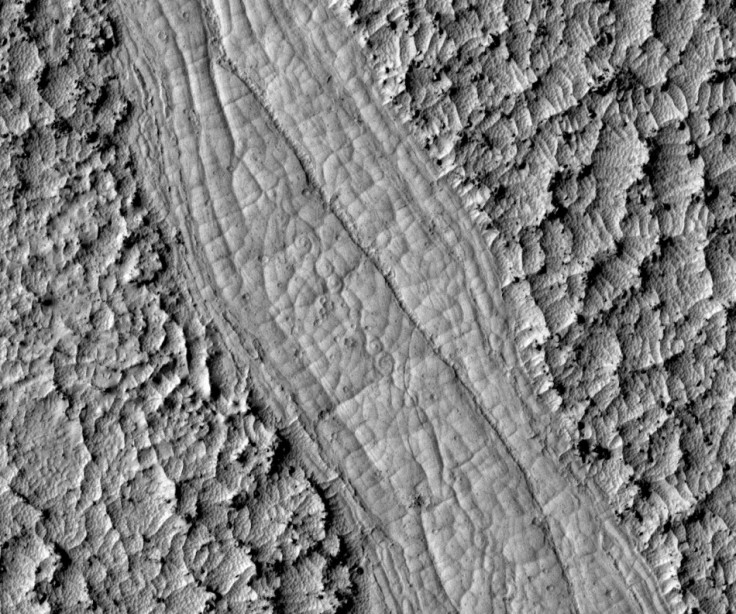Spiral Lava Flows Discovered on Mars [PHOTO]

Scientists have discovered spiral patterns left behind by lava flows in the Athabasca Valles on Mars, according to findings published in the scientific journal Science.
Andrew Ryan, a first year graduate student from Arizona State University studied the high-resolution images captured by Nasa's Mars Reconnaissance Orbiter and noticed more than 200 spiral patterns near the southern margin of Cerberus Palus.
He found that the spiral patterns resembled snail's or nautilus shells and were left behind by lava flows on the Athabasca Valles near the Mars' equator.
Lava flows have been discovered on earth such as the flow on the Big Island of Hawaii and also in submarine lava flows near the Galapagos Rift on the Pacific Ocean floor. But this is the first time that lava flows have been found on Mars, reported Space.
"This is the first time lava coils have been identified on an extraterrestrial setting. The most surprising thing about these features when I first saw them was how well-preserved they are,"Andrew Ryan told Space.
For long, scientists have debated about the Athabasca valles's origin. Some researchers have suggested that the lava flows shaped the valleys, while some others have said that ice was behind the formation of the valleys.
But now, Ryan found that the new images of spiral patterns that ranged from five to 30 metre (16 to 98 feet) wide resembled the lava flows on the Big Island of Hawaii. This led Ryan to conclude that these lava flows could not have been formed by ice- or water-related processes.
"These can only be explained by lava processes," Ryan said. "There are no known processes to twist ice around on that scale," he told Space.
Ryan believes that models created using these spiral patterns will help to find out how they were formed and also about the composition of the Martian crust (Mars crust) and mantle.
Nasa's Mars Reconnaissance Orbiter was launched in 2005 to find evidence of water on the surface of the red planet and also to check the time period the water persists.
© Copyright IBTimes 2025. All rights reserved.





















